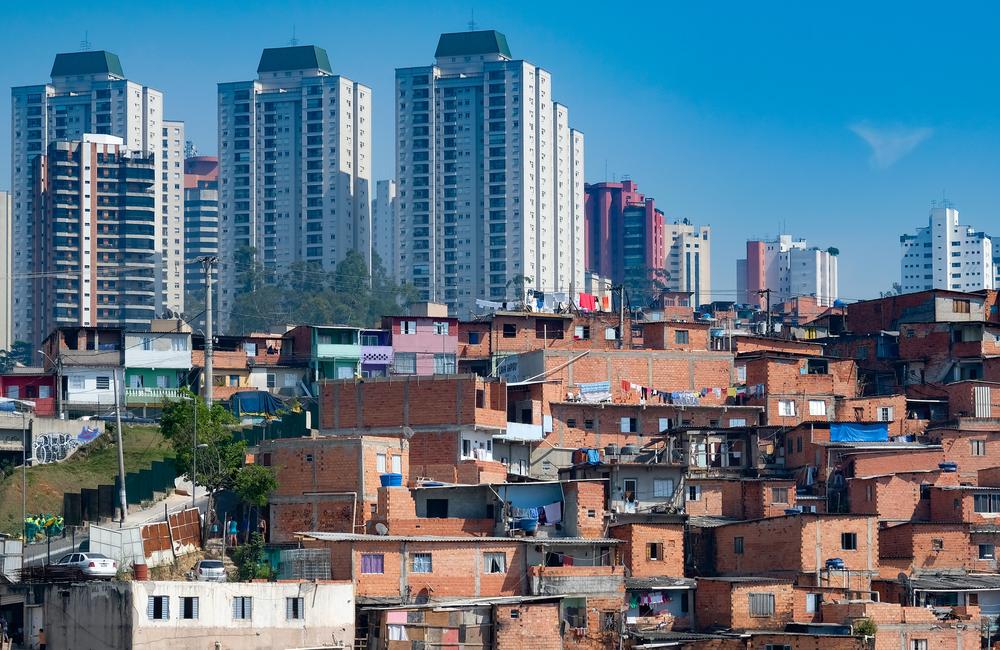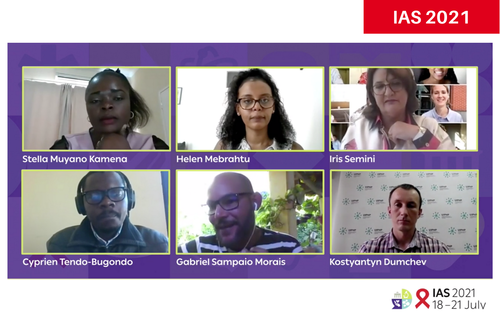
Education, poverty, and race have an undeniable link to AIDS-related outcomes in a study of nearly 30 million Brazilians, according to researchers from the Federal University of Bahia.
Their findings show that people who are not well educated, poor and Black are at a higher risk of being diagnosed with AIDS and dying as a result.
“To our knowledge, this study is the largest and most comprehensive evaluation of the effects of social determinants of health on infectious diseases, and in particular, HIV and AIDS,” the authors say.
Background
While Brazil has widespread free HIV testing and was one of the first middle-income countries to offer free antiretroviral therapy (ART) to all people living with HIV, the death rate from AIDS-related complications remains high, at six deaths in every 100,000 people each year. Brazil also accounted for nearly half of all new HIV infections in Latin America in 2020.
Social determinants of health are the social and environmental conditions that influence HIV risk, access to testing, access to treatment, disease and death. As Brazil is one of the most unequal countries in the world, the researchers wanted to gain a better understanding of how factors such as education and poverty impact the risk of being diagnosed with AIDS and AIDS-related death.
The study
The 100 Million Brazilians Cohort covers 56% of the entire population and contains data extracted from various national registries. This includes linked social information from CadÚnico, a registry used to identify people who are eligible for social protection programmes and Ministry of Health data on AIDS diagnoses and deaths.
After excluding anyone younger than 13 and those diagnosed with AIDS before 2007, researchers led by Dr Iracema Lua carried out a retrospective study for the period from 2007 to 2015, including 28,218,532 Brazilians with an average age of 36. The majority were women (53%) and of mixed race, or pardo background (58%).
In terms of the social determinants of health, 59% had a primary school education and 28% were classified as occupying the lowest level of wealth. As the cohort includes only people of a lower socioeconomic status who had applied for social welfare programmes, 65% of the sample were Bolsa Família beneficiaries. This programme provides cash transfers to low-income families on the condition that they send their children to school and engage with healthcare.
Most people lived in houses with favorable conditions – built of brick (81%), with electricity (89%), public water supply (79%), garbage collection (81%) and a sanitary sewage system (52%).
Impact of the social determinants of health on AIDS outcomes
During the study period, there were 29,919 new AIDS cases (an annual incidence rate of 20 per 100,000) and 9,530 AIDS-related deaths (an annual mortality rate of 6.9 per 100,000). The case fatality rate (the number of people who died from AIDS-related complications who had been diagnosed with AIDS) was 6.9 per 100 person-years.
Higher proportions of AIDS cases and AIDS-related deaths appeared among men (54% and 57%), people aged 24 to 35 (39% and 35%), urban residents (91% and 92%), those with only a primary school education (70% and 74%), those in the lowest wealth group (42% and 43%) and Black people (13% and 15%).
Regionally, people living in the south or central-west of the country were 48% and 28% more likely, respectively, to receive an AIDS diagnosis than those living in the north. People living in the south-east and south were 46% and 36% more likely to die from AIDS-related complications. People living in urban areas were more than twice as likely to receive an AIDS diagnosis and die as a result.
Socioeconomic indicators consistently linked to a higher risk of developing AIDS and dying from it. Illiterate people had a 46% higher risk of getting diagnosed with AIDS and nearly three times the risk of dying from it, when compared to those with higher levels of education. The same pattern was true for those who had only completed primary school.
Black people had a 53% higher risk of being diagnosed with AIDS, and a 69% higher risk of an AIDS-related death, compared to White or Asian people. Wealth was also closely related to AIDS outcomes: the least wealthy had a 55% higher risk of receiving a diagnosis and were 99% more likely to die as a result. The authors ascribe these findings to structural racism that leads to racial health inequalities, including in access to and quality of healthcare services. However, structural racism is also tied more broadly to worse housing conditions and lower incomes. Thus, poverty and race intersect to create worse outcomes than either alone.
Interestingly, the length of time receiving conditional cash transfers differentially impacted outcomes. Those who had received the Bolsa Família transfers for less than two years had an 8% higher risk of getting ill, and an 18% higher risk of an AIDS-related death than those who did not meet the criteria for the benefit. However, a protective effect was seen for those who had received the transfers for between five and ten years, or for more than ten years. There was a 30% reduction in risk of getting an AIDS diagnosis, and a 53% reduction in risk of dying as a result. This may be both because of the cash allowances and the condition of needing to monitor health to keep receiving them.
Conclusion
“Our results reveal that the entire chain of AIDS-related events is influenced by social determinants of health, whether through a higher risk of infection (due to economic, cultural, or geographic barriers to preventive measures, and higher risk sexual behaviours), or a greater risk of acquiring an advanced disease, and dying from it (due to less access to diagnosis, early treatment, advanced healthcare, and hospitalisation),” the authors conclude. “It is understood, therefore, that social determinants of health, especially wealth levels, education, and race/skin colour, are strongly associated with the dynamics of HIV/AIDS infection and survival.”
Lua I et al. The effects of social determinants of health on acquired immune deficiency syndrome in a low-income population of Brazil: a retrospective cohort study of 28.3 million individuals. The Lancet Regional Health Americas 24: 100554, 2023 (open access).

